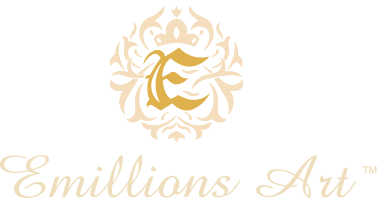Years of experience
Our Services
For Collectors, BUILDERS & Inheritors
Art Advisor Mentor Guide Manager Navigator Curator
Emillions Art is a Global Fine Art Consultancy providing Fine Art Asset Management. By providing our clients with up to date market insights, industry trends and the connections they want, we secure work that best suits their goal. Emillions Art has curated a global asset network that has served our clients well in their efforts to build collections, procure art, and diversify their portfolios.
30+
100M
Fine Art Mgmt
Art Services
Evaluation,
Cataloguing
and Appraisal
Acquiring
High Value Art
Selling
High Value Art
Securing Value
from Ownership
Estate Management
and Gifting
Collection
Management
and Growth
Working Together
At Emillions Art we are committed to your success and choosing Emillions means choosing excellence, trust, authenticity and transparency.
Our Approach
Your journey with Emillions begins with an initial consultation, to understand your goals and aspirations. From there we develop a deep, confident, and outcome-oriented relationship with you; enabling you to ensure your art assets are working for you, as your trusted partner at every step of your artistic journey.
Achieving Results
Our experience tells us that, to truly assure the best outcome for achieving Value from your Art, it is essential that you have precision and clarity at each stage, with alignment throughout.
Put simply, this means that all goals must be clear, artworks stored securely, verified and in good condition, all provenance and documentation available, a strategy for securing value clearly defined and the execution process ( for example private deal, public deal, auction, gifting, inheritance, legacy) fully defined and managed. This is often known as “fine art asset management” or “collection management”, and this is where we work closely with you to share our experience and expertise.
With a commitment to excellence, we help you navigate the complexities of the art market, offering unique solutions that transcend the ordinary.
Art Services
As leading advisors in the realm of fine art, we firmly acknowledge that owners and collectors of great art of substantial value require not merely appreciation but also meticulous management and curation to safeguard and add to its enduring value.
By serving as custodians for discerning collectors and caretakers of artistic legacies, we know that the intrinsic worth of these masterpieces extends beyond their aesthetic appeal. Through a process of careful curation, we select and strategically manage artworks using our extensive network across all facets of the art market, ensuring their alignment with the collector’s vision and positioning them as investments poised for growth.
This deliberate approach not only safeguards the financial commitment of the collector but also contributes to the cultivation of a distinguished reputation in the art world. By adeptly navigating the complexities of the art market, we empower our clients not just to accumulate a collection of high-value art but to forge a lasting legacy that can be passed on to their families for generations —one that transcends transient trends, resonating through time as a testament to their discernment, foresight, and profound appreciation for the profound impact of art on culture and heritage.



